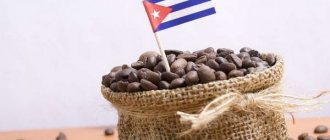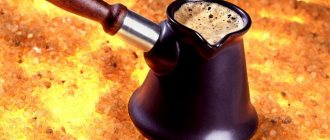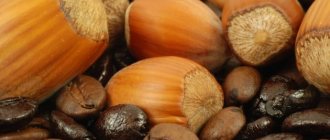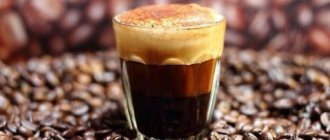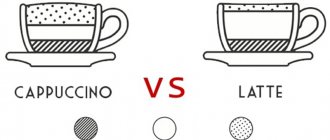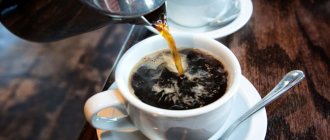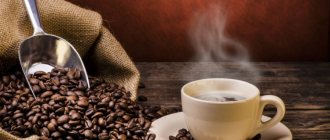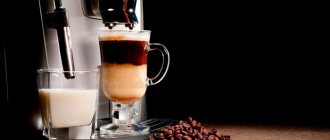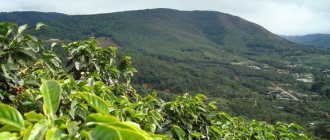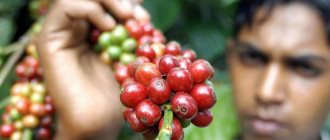When a person first gets acquainted with coffee, he is faced with a variety of types. The beans differ by type - Arabica and Robusta, by place of growth and roasting method. All this affects the taste of the finished drink. Thus, coffee from Cuba is not as famous as Brazilian or Kenyan coffee. It is grown on small farms in mountainous and foothill areas. The harvested coffee is collected, dried, cleaned and then roasted until almost black. The finished grains acquire a dark shade and almost glossy appearance.
Features of coffee production in Cuba
Coffee began to be grown in Cuba in the mid-18th century. Then the seedlings were brought to Liberty Island from Haiti. A small experimental plantation was located near the capital. Nowadays, coffee trees already grow in vast areas in mountainous and foothill areas.
The production of coffee products is carried out using classical technology, which is used all over the world. The beans are collected, dried, peeled, then sorted and fried. True, the last stage of work in this state differs from the traditional one. The grains are roasted at high temperatures until the oils and resins are completely dried on the surface. There is no sticky shine on the grains. They take on an almost black tint.
Coffee production is usually carried out by small farms, which are inherited within the family. Fruits are grown, collected and processed on them. After this, they are transferred to a government agency specializing in coffee products. They are already creating blends there and exporting them. All coffee is produced under the Kubito brand.
Single-origin Cuban coffee is not sent abroad. They can be purchased exclusively in Cuba
Havana. Souvenir shops and flea markets
While in most tourist towns and resorts you will find souvenir shops every now and then, in the endless string of Havana streets it is better to know where to go in advance. Firstly, here you can buy factory-made souvenirs much cheaper than in tourist villages. Secondly, there are also quite interesting shops with handmade goods. Thirdly, in Havana there is a flea market where you can find absolutely unique things. I will tell you about the most interesting places below, and you can see their location on the map.
- The Almacenes San Jose souvenir market is perhaps the most popular in Cuba. Here you can buy both factory-made gifts (figurines, T-shirts, ceramic ashtrays and magnets) and handmade items, including paintings. Don't be surprised if product prices seem high at first - bargain hard and you can cut the price in half. Don’t be shy about pretending to leave—this action quickly convinces sellers to take your side in the bidding. The market opens around 9-10 am and runs until 6 pm.
- Plaza Vieja is one of the main squares of the city. You should walk around it carefully, as on every street you will come across interesting souvenir shops, including stylish boutiques with handmade products.
- Plaza de Armas is the square where the flea market is located. I was here on Saturday, and the entire area of the square was lined with stalls. They say that on weekdays there are fewer sellers here, but only they themselves can know the exact work schedule of the traders. Here they sell small trinkets for 3-5 USD - badges, jewelry and coins, as well as quite expensive antiques (from 50 USD), as well as many old books. When purchasing products, be careful - you may be detained at customs with expensive antique products. Sellers at Plaza de Armas know nothing about the rules for exporting goods, so this question remains on your conscience.
- Paseo de Prado is a wide avenue where most street artists sell their work. There is a really large selection of paintings here, and prices start from 5-8 USD.
- Fin de Siglo is a small souvenir market. It is located a little further from the center than other retail outlets, and is not so popular among tourists, so you can buy souvenirs here at the cheapest prices. The exact opening hours of the market remain a mystery to me, so it’s better to come here from 11 to 17, when it is guaranteed to be open.
The secret of unusual taste
The taste of coffee beans grown in Cuba is quite original. This is primarily due to climatic conditions and soil characteristics, but the processing technology plays a special role. To make beans an elite product, the following manipulations are performed:
- cleaning . The peel of the fruit is removed with special machines, and not by hand;
- fermentation. In order to get rid of the viscous liquid, the grains are placed in concrete containers. By increasing the temperature, the beans become lighter. The fermentation process is considered complete only when the fruits stop sticking to your hands;
- flushing The grains are thoroughly washed and empty specimens are immediately discarded;
- drying. Produced outdoors. Its duration is a maximum of a day;
- grinding _ The two grains are separated from each other. The husks are removed immediately. This work is carried out with the utmost care. If the beans are damaged, they will be unsuitable for shipping abroad;
- cleaning The fruits are sifted and thus all excess is removed;
- sorting. Berries are separated by size. For this purpose, special sifters are used;
- Density-based selection. Sorting is done according to specific gravity;
- sorting by color. Only blue-green and brown-green beans are exported. All others are thrown away;
- quality control. Check for defects. The humidity level is also determined;
- roasting The procedure is performed using a special technology. The moment of termination of heat treatment is determined by an experienced roaster;
- cooling. To preserve the rich aroma, this procedure is performed in the same container where the roasting was carried out.
Due to such painstaking processing, the grains acquire excellent taste.
Clothes and accessories
On the streets of tourist cities in Cuba, stalls with clothes line one after another. Most often, tourists buy it not so much as a gift, but for themselves. These are mainly items designed for hot weather - light linen dresses and trousers, straw hats and beach bags. Leather products are also sold, such as belts and backpacks. But I recommend that you sniff them carefully first, as many have a strong goat smell. Prices for products vary greatly in different regions - from 7-10 USD for an accessory and from 15-20 for a piece of clothing. Also, at each store, jewelry is sold: beads, bracelets and earrings made of nuts, seeds and coffee beans for 2-10 USD. These items significantly lift the spirits of travelers, because with such accessories you feel much more like you are vacationing in the Caribbean.
Where can I buy
Many people hope to purchase elements of authentic Cuban clothing in regular local stores. But I dare to disappoint you - city shopping centers are a very sad sight. The choice of clothing and accessories there is very small, and the assortment consists entirely of Chinese products. Therefore, you can only dress up in Cuban style in souvenir shops .
Popular varieties
A huge number of coffee brands are supplied to the world market from Liberty Island. Cuba Crystal Mountain and Cuba Altura Lavado are especially popular among them. You should also highlight the best varieties of Cuban coffee:
- Altura. Valued for its increased caffeine concentration and unsurpassed aroma. The drink has astringency and bitterness;
- Maragogyp. Considered one of the best varieties. Characterized by a rich aroma and quite unusual taste;
- Guantanamo . Acidity is minimal. The drink turns out tart, with a tobacco aroma;
- Turkino . Prized for its chocolate and tobacco aroma;
- Serrano. The taste has a slight sourness. There is a pleasant sweetish aftertaste;
- Trinidad. The caffeine concentration is less than in other varieties. The aroma is rich and the taste is slightly tart.
Origin story
The practice of drinking iced coffee dates back to the 17th century. in Holland, when planters, exhausted by the heat, left the traditionally brewed coffee drink to cool. At the same time, another method of preparation appeared: coffee grounds were poured with cold water , infused, and the resulting drink was drunk.
The first option has become widespread on the European continent, while the second has not gained such popularity. At the same time, the famous French writer Honore de Balzac believed that the infusion obtained from coffee grounds filled with cold water gives more vigor than other variations of coffee.
Meanwhile, the cold drink obtained as a result of infusion was accepted by the residents of Japan, where it was produced and sold for a long time.
With the invention of an instant coffee drink, which was diluted with cold water to the required temperature, cold brew was temporarily forgotten. It was only in 1964 that this method of making coffee began to be used again . This happened thanks to Todd Simpson , who, after visiting South America, rediscovered this method of making coffee. Returning home, he prepared a coffee infusion for his wife, who, due to stomach problems, could not drink regular coffee. Moreover, Simpson made a special coffee maker that made it possible to prepare iced coffee.
A new way of preparing a coffee drink has found its admirers.
However, the real revival of this type of coffee occurred only at the beginning of the new millennium. Today it is experiencing its rebirth: the drink’s recipe and production technology are being rethought, and specialized equipment for production is being produced.
Features of preparing coffee in Cuban style
In Cuba, the coffee drink is usually prepared with rum. The following ingredients are used:
- 15 g ground beans;
- 15 g granulated cane sugar;
- 200 ml water;
- 15 ml rum.
The following actions are performed:
- The coffee beans are ground.
- The resulting coffee powder is poured into a Turk and mixed with granulated sugar.
- Water is poured into the cezve.
- The container is placed on the stove.
- When the liquid begins to boil, the Turk is set aside.
- The drink is infused for a couple of minutes, after which it is poured into a cup.
- Rum is added to the composition.
Cuban coffee has unusual taste characteristics. Therefore, it has earned popularity among coffee lovers. The drink is strong and incredibly aromatic. This result is achieved regardless of which variety is chosen.
Customs regulations
Before you buy souvenirs for the whole family, ask yourself the question “Will I be able to take this away?” Customs rules in socialist Cuba are complicated. They are constantly changing in favor of tourists, but there are still many nuances that you need to know. Our customs often finds fault with the standards, carefully counting how many cigars each tourist brought. Perhaps there is an even greater risk of saying goodbye to any item upon arrival in Russia, since in Cuba the luggage of foreigners is now checked less and less often. Below I will talk about customs prohibitions and restrictions.
Items that cannot be exported
- Stuffed birds and animals, feathers and leather. This point does not apply to crocodiles, which I will discuss below;
- It is officially prohibited to export national currency. However, it seems to me that this question arises only if the tourist has large sums of money. Neither Cuban nor our customs will take away from you a few cookies that you decided to take home as a souvenir;
- Sea shells and raw corals;
- Art objects and artifacts of historical value. This does not apply to paintings that you buy on the street, but at the Plaza de Armas flea market you may well find antiques that will raise questions at the airport.
Souvenirs with limited quantities
This item applies to the most popular types of gifts - rum and cigars.
- It is prohibited to export more than 2 liters (or 3 bottles) of rum;
- At the time of my trip, it was not allowed to export more than 25 cigars. Now, as far as I know, the permissible standard has been increased to 50 pieces. If you want to export more tobacco products, you will need a special certificate.
Souvenirs that require a certificate for export
In Cuba, I learned one rule: if you buy an expensive thing, ask the seller for a certificate. This is useful not only for customs, but also for your own peace of mind. Below I will provide a list of items for which you may be required to have a special document at the airport.
- Expensive paintings and art objects. If you purchase a painting from a gallery, ask if it requires a certificate. The sales people in these places are very knowledgeable and will be able to help you;
- If you want to take more than 50 cigars out of Cuba, you should buy them only in branded stores. There you will be given a document allowing you to take away tobacco products worth up to 2000 USD;
- A certificate is required for the export of products made from crocodile skin and stuffed crocodiles;
- Coral jewelry also requires a special document.
How to Make a Successful Cold Brew
The final taste of the product is influenced by several factors: type of beans, degree of grinding, proportions of ingredients. To make the drink enjoyable, it is important to carefully select all components.
Grain selection
The degree of roasting of the beans affects the final taste of the coffee. The darker the product, the more bitterness and sourness will be felt. Therefore, it is better to prefer light or medium roasted beans. Then the result will be light and soft coffee. Fruit varieties also work well. You can buy green beans and roast them yourself.
Roasting beans affects the taste of coffee; it is better to take large beans.
Correct grinding
It is better to choose a coarse and coarse grind. If the grains are small, the drink may have an unpleasant aftertaste, and then a feeling of dryness in the mouth.
Dosage of components
It is better to select the ratio of components individually and, through experiments, identify the most successful one. It is believed that you can try it with 60–70 g of coffee per liter of water. With these proportions you will get a light product. It can be consumed in its pure form.
Increasing the number of grains to 80–120 g will result in a denser and more bitter concentrate. This mixture can be used to make cocktails.
Adding water
The water must be purified or filtered. You can use bottled or mineral. The optimal water temperature for brewing is 20°C.
Where to buy ready-made drink
Now large establishments, such as Illy, Starbucks, prepare the cold product for sale in cans. In Japan it is sold in supermarkets. In Russia, cold coffee can even be ordered from Ozon and other online stores. In addition to classic coffee, premium Redo Cold Brew is also sold in special bottles.
Which is better - homemade Cold Brew or from a coffee shop?
Making this kind of coffee yourself is difficult; selecting the right combination of ingredients can take a long time. Therefore, it is better to trust the professionals and order it from the barista.
Taste qualities of Cold Brew
It is believed that such a product is less acidic than, for example, espresso. In cold water, acids and oils dissolve in smaller quantities by 60–70%. Therefore the taste is softer. Other features:
- Pronounced grade. The cooled liquid helps to reveal fruit, berry, honey and other descriptors that help determine the origin of the grains.
- Increased caffeine content.
- Density. Due to prolonged infusion, the drink turns out thicker and more viscous.
